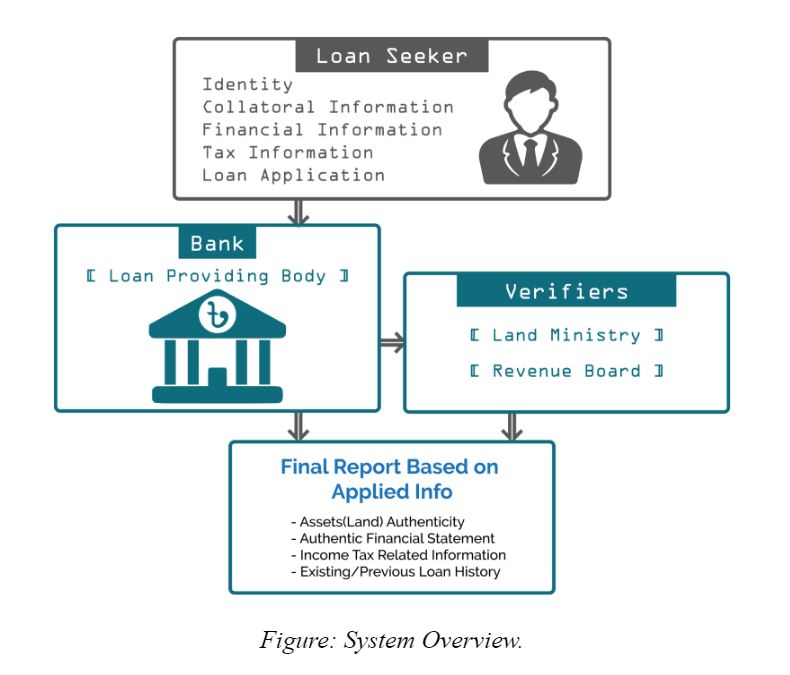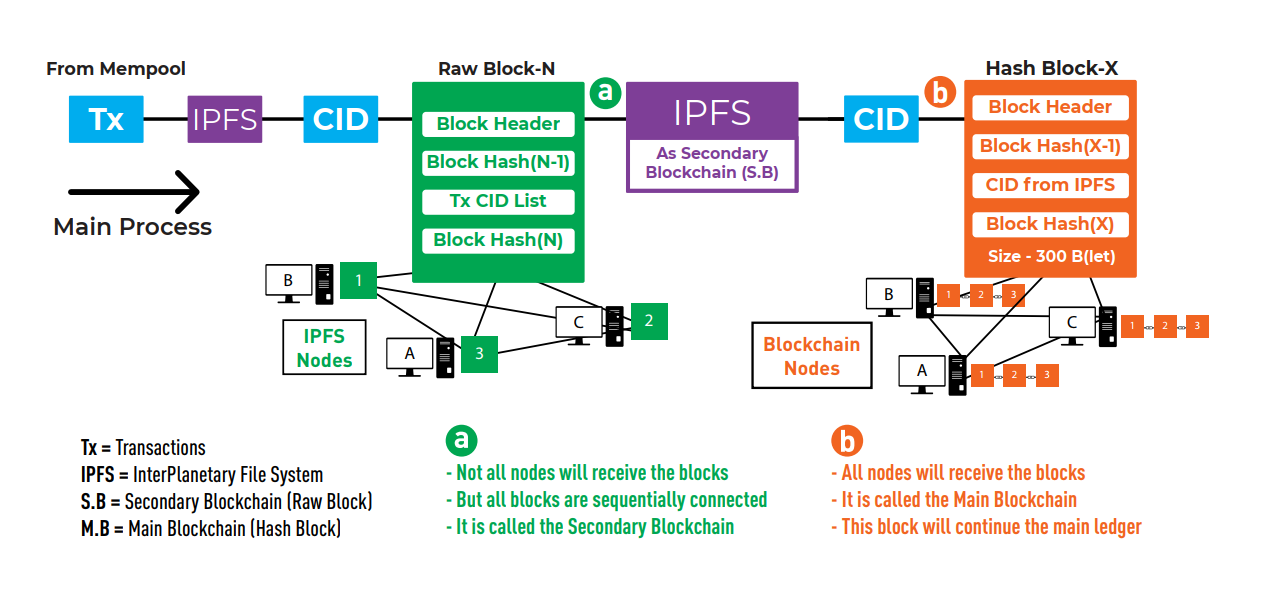Education

B. Sc in EEE | 2017 - 2021
Bangladesh Army International University of Science and Technology, Bangladesh
GPA: 3.54/4.00
Higher Secondary School Certificate | 2014 - 2016
Cumilla Victoria Government College
GPA: 4.83/5.00


Secondary School Certificate | 2014
Cumilla Zilla School
GPA: 5.00/5.00
Research Experience
Improving Blockchain Scalability Using IPFS and Dual-Blockchain Method
Thesis supervisor: Dr. Fakir Sharif Hossain
The blockchain is a decentralised and distributed ledger technology with the critical attribute of immutability. In recent years, blockchain-based cryptocurrencies have received much interest and have been widely used. With its encouraging positive value and a worldwide consensus mechanism of Proof-of-Work(PoW), Bitcoin has been beneficial worldwide. Today, numerous apps are being deployed on the blockchain with increasing effort. In order to cope with optimal applications, blockchain will need to be in its perfect state. In this manner, the Trilemma concept is addressed to require the complete cooperation of Decentralisation, Security, and Scalability without compromising anyone. However, after years of revolution in the digital transaction sector, miners face serious scalability issues with bitcoin’s peak limit of only 7 transactions per second. On the other hand, the ledger size of bitcoin is on the way to exceed 350 GB and growing exponentially. The problem of the requirement for extensive storage is known as the "storage bloating problem." This paper proposes a solution to the scalability issue of bitcoin in terms of throughput and storage, which uses IPFS and a dual-blockchain technique. A test of a practical prototype is also conducted to observe the effectiveness of this solution and then compare it with Bitcoin's current scenario. This paper aims to pave the way for bitcoin to be adopted in real-life applications and its bright future of sustainability.
Publications

Increasing Throughput and Reducing Storage Bloating Problem Using IPFS and Dual-Blockchain Method
Published: 2nd International Conference on Robotics, Electrical and Signal Processing Techniques (ICREST)
DOI: 10.1109/ICREST51555.2021.9331254
Abstract: Blockchain is a revolutionary technology that has been underlying behind many cryptocurrencies for many years. Due to the scalability issue, this decentralized system lags behind the centralized currency systems, and cannot be adopted by other platforms though it has a lot of unique features. This paper is motivated due to the lack of enough scalability on the existing blockchain technologies. A theoretical method is proposed in this paper to increase throughput and reduce storage dependencies. A distributed storage system IPFS is used to bypass the storing liabilities and to increase throughput. The dual-blockchain method serves the core features of the blockchain by adding the references of the main block into the ledger in place of the original block. The analysis shows that our proposed method can achieve up to 25.8 times greater throughput and almost 1685 times lesser ledger size compared to Bitcoin Core.

Diagnosing autism spectrum disorder using ensemble 3D-CNN: A preliminary study
Published: 29th IEEE International Conference on Image Processing (IEEE ICIP)
10.1109/ICIP46576.2022.9897628
Abstract: Autism spectrum disorder (ASD) is a neuro-developmental disorder that results in behavioural retardation in verbal communications and social interactions. Traditional ASD detection methods involve assessing patients' behavioural patterns by medical practitioners, which often lack credibility and precision. The contribution of the current study involves a 3D-CNN (convolutional neural network) model to diagnose ASD patients from healthy individuals using functional magnetic resonance imaging (fMRI) of the brain. We utilised a publicly available dataset, Autism Brain Imaging Data Exchange (ABIDE I), and tested different CNN-based models in individual and combined brain parcellations. Our model showed a better outcome (74.53\% accuracy, 69.98\% sensitivity, and 76.00\% specificity) for combined parcellations than individuals. Further, we compared our model with several state-of-the-art models and discussed the suitability of our model for future prospects. The current model would be a predecessor of future prognosis models or behavioural patterns-based multi-modal models for early detection of ASD.
Projects
Project #1
Blockchain For Preventing Loan Default
A Secure and Authentic Information Provider for Financial
Organizations


Problem
Loan default is a major problem for the economy of Bangladesh.
In June 2021, outstanding loans were Tk 12,18,736 Crore. Out of this, nonperforming loans
were Tk 99,205.14 crore. Thus, the NPL ratio rises by 8.14%. According to this data, Bangladesh
tops the list of loan default indexes in South Asia.
Current system loopholes that we are focusing on:
- Failure to authenticate proper documentation
- Improper evaluation of mortgage property
- Poor governance and regulations
Solution Overview
The proposed system has three connections among banks,
the land ministry, and the national revenue board. Therefore, whenever a loan seeker
applies for a loan, a final report will be generated from a blockchain associated with
these three domains. This report will contain authentic financial information relevant
to the account/account holder, accurate collateral/asset information and its mortgage
information(if any), existing/previous loan status, and tax-related information to verify
the legitimacy of the income sources. According to this information, the loan provider can
come up with decisions regarding the approval of the loan, the amount & conditions of the loan, etc.
Achievements
The proposed framework refrains the non-eligible loan seekers from taking loans, thus saving a
large amount of borrowed money from being lost. Fast real-time loan verification has been made possible
through this system. Moreover, Hierarchical transparency can also be maintained using our proposed
approach. In addition to all the parameters contributing to preventing the non-performing loans, our
system requires that the loan seeker provide the payment evidence of a large amount of tax before taking
macro-scale loans, which can remarkably contribute to the financial state of Bangladesh. Consequently,
the profitability to be brought by our system will enhance the economic growth of Bangladesh by
preventing non-performing loans. Faster processing time, improved transparency, and no additional
deployment cost for both the loan-providing organizations and the borrowers eventually makes our
system feasible both economically and technically
File Section


Problem
Loan default is a major problem for the economy of Bangladesh.
In June 2021, outstanding loans were Tk 12,18,736 Crore. Out of this, nonperforming loans
were Tk 99,205.14 crore. Thus, the NPL ratio rises by 8.14%. According to this data, Bangladesh
tops the list of loan default indexes in South Asia.
Current system loopholes that we are focusing on:
- Failure to authenticate proper documentation
- Improper evaluation of mortgage property
- Poor governance and regulations
Solution Overview
The proposed system has three connections among banks, the land ministry, and the national revenue board. Therefore, whenever a loan seeker applies for a loan, a final report will be generated from a blockchain associated with these three domains. This report will contain authentic financial information relevant to the account/account holder, accurate collateral/asset information and its mortgage information(if any), existing/previous loan status, and tax-related information to verify the legitimacy of the income sources. According to this information, the loan provider can come up with decisions regarding the approval of the loan, the amount & conditions of the loan, etc.
Achievements
The proposed framework refrains the non-eligible loan seekers from taking loans, thus saving a large amount of borrowed money from being lost. Fast real-time loan verification has been made possible through this system. Moreover, Hierarchical transparency can also be maintained using our proposed approach. In addition to all the parameters contributing to preventing the non-performing loans, our system requires that the loan seeker provide the payment evidence of a large amount of tax before taking macro-scale loans, which can remarkably contribute to the financial state of Bangladesh. Consequently, the profitability to be brought by our system will enhance the economic growth of Bangladesh by preventing non-performing loans. Faster processing time, improved transparency, and no additional deployment cost for both the loan-providing organizations and the borrowers eventually makes our system feasible both economically and technically
File Section
Project #2
Scalable Blockchain System
A blockchain system that is less storage-dependent and has a higher throughput than bitcoin

System Overview
Project Overview
For many years, numerous cryptocurrencies have been supported
by the innovative technology known as blockchain. This decentralized system, despite having
many unique characteristics, falls behind centralized currency systems in terms of scalability
and cannot be adopted by other platforms. Increasing throughput and reducing the dependence on
huge storage are the goals of this project. The storing obligations are avoided, and throughput is
increased by using the distributed storage system named IPFS. By inserting references to the main block
into the ledger in place of the original block, the dual blockchain approach serves the fundamental
characteristics of the blockchain. The analysis reveals that as compared to Bitcoin Core, our system
can reach up to 2 times greater throughput and about 1685 times smaller ledger size.
File Section
Project Overview
For many years, numerous cryptocurrencies have been supported by the innovative technology known as blockchain. This decentralized system, despite having many unique characteristics, falls behind centralized currency systems in terms of scalability and cannot be adopted by other platforms. Increasing throughput and reducing the dependence on huge storage are the goals of this project. The storing obligations are avoided, and throughput is increased by using the distributed storage system named IPFS. By inserting references to the main block into the ledger in place of the original block, the dual blockchain approach serves the fundamental characteristics of the blockchain. The analysis reveals that as compared to Bitcoin Core, our system can reach up to 2 times greater throughput and about 1685 times smaller ledger size.




